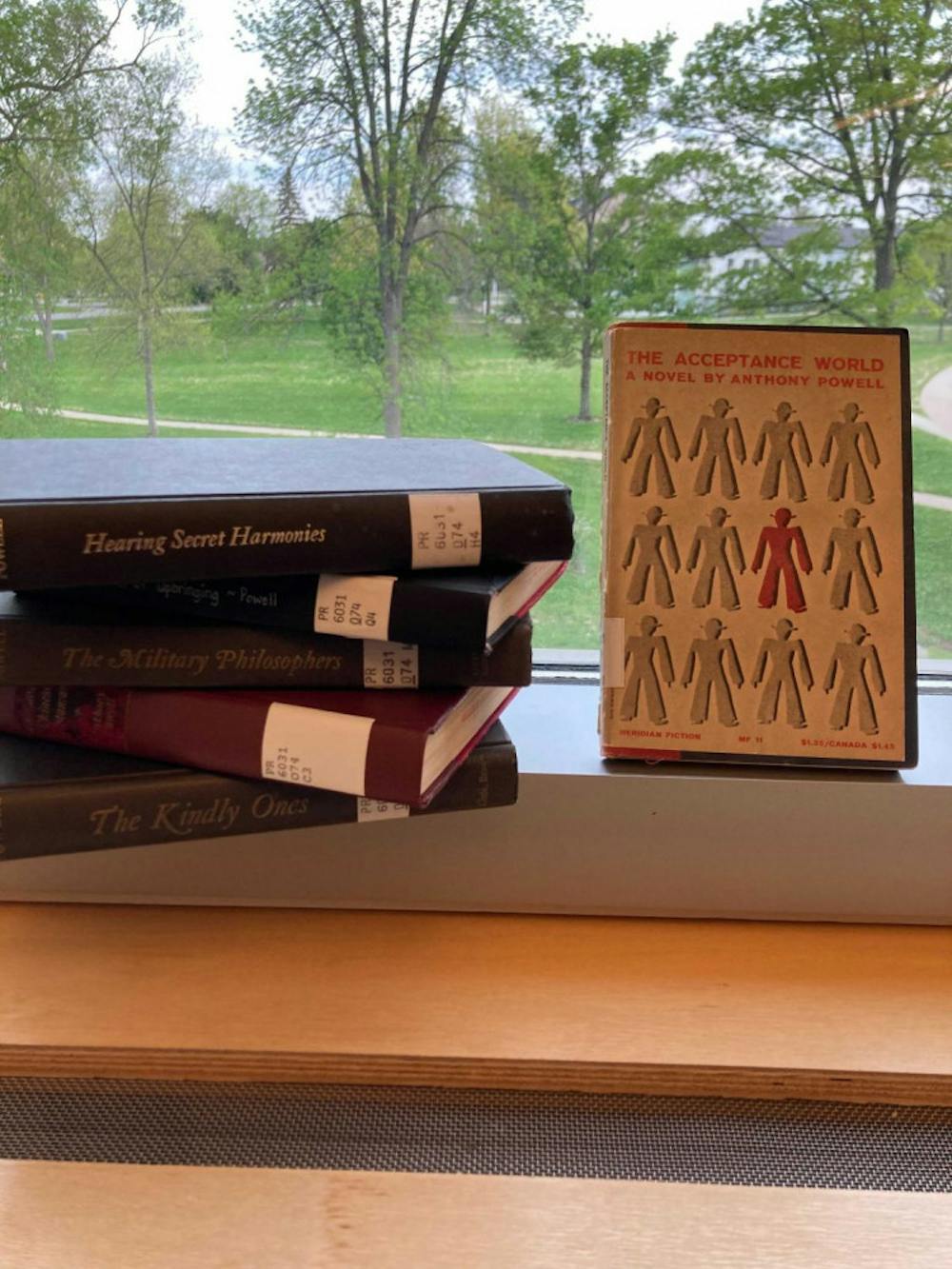The Center for Disease Control’s announcement that masks and social distancing aren’t required anymore in most instances for fully vaccinated Americans has led me, strangely enough, to revisit a hidden gem of literary fiction: Anthony Powell’s 12-volume tragicomedy masterpiece, “A Dance to the Music of Time.” Powell’s 20th century novel explores the marvels of coincidence and the joys of conversation. Heading into this summer, the series is a good frame of reference for readers who want to reflect on why people in our newly-active social lives are so fascinatingly complex.
“A Dance to the Music of Time” chronicles a British circle of upper-middle-class bohemians and their non-artist friends from the 1920s to the early ’70s through a series of chance encounters at parties, receptions and dinners. Powell follows this group through the eyes of Nick Jenkins, a young publisher who later becomes a novelist. Like F. Scott Fitzgerald’s Nick Carraway, Powell’s Nick Jenkins is a cypher, but this also makes him a perfect window through which to examine the people who surround him. His circle is an assortment of painters, poets, composers, financiers and aristocrats who all seem a little like P.G. Wodehouse’s aloof characters, albeit if they were dropped into our own deeply flawed world.
Powell revels in the limits of Nick’s first-person narration: the series’ protagonist can only conjecture about the inner-lives of his friends. Although we don’t know if Nick’s guesses about his peers’ love lives and personal traits are entirely accurate (though you get the feeling that they mostly are), his conclusions tend to apply perfectly to people in general. For example, consider when Dicky Umfraville claps eyes on Buster Fox, a man who seduced one of Dicky’s several ex-wives years before. Instead of getting right to the confrontation, Powell takes his sweet time.
“When people really hate one another,” Powell writes, “the tension within them can sometimes make itself felt throughout a room, like atmospheric waves, first hot, then cold, wafted backwards and forwards as if in an invisible process of air conditioning, creating a pervasive physical disturbance.”
Another highlight of the series is the character Kenneth Widmerpool, an antagonist who, like Milton’s Satan, gets all the best lines. Widmerpool, Nick’s old schoolmate, has a “piscine” (fish-like) appearance that masks an unquenchable lust for power. The character’s scheming leads him to financial success, military advancement during the Second World War and a seat in the House of Commons. His inglorious decline ends, somehow perfectly, with the occult.
Some critics find Powell’s style a tad extravagant. This is a misreading, but an understandable one. If the prose of the “Dance” is purple, it is a light violet, quietly controlled by the author in ways that you notice when you throw yourself into the text.
In the first pages of the series, the narrator’s thoughts turn to the Baroque-era painting “A Dance to the Music of Time” by Nicolas Poussin, causing the Proustian flashback that begins the story: “The image of Time brought thoughts of mortality: of human beings, facing outward like the Seasons, moving hand in hand in intricate measure, stepping slowly, methodically sometimes a trifle awkwardly, in evolutions that take recognisable shape: or breaking into seemingly meaningless gyrations, while partners disappear only to reappear again, once more giving pattern to the spectacle: unable to control the melody, unable, perhaps, to control the steps of the dance.”
This quote has no business working as well as it does. Powell’s style might not be your cup of tea, but it is charming in a warmly rambling, elegantly impromptu sort of way.
A more reasonable objection to the series is Jenkin’s memories of World War II, which are largely based on Powell’s own experience in the war. Reading this slower section of the series, you sometimes wish that Powell did more exciting things than writing up memos in Northern Ireland during the war. But these middle books still have their merits: the war trilogy constructs a comedy of manners about the bureaucratic slog of army life which Nick mostly abhors and Widmerpool, hilariously, finds his natural environment in.
“Poetry makes nothing happen,” wrote W.H. Auden. Although on the surface nothing really happens in “A Dance to the Music of Time,” there is ample poetry in this low-key saga that so deftly explores the unknowability of human relationships and the enchanting weirdness of the way life unfolds. Will the academy or critics ever take Powell as seriously as they do other British stylists of the twentieth century such as Woolf or E.M. Forster? Probably not, although Powell may be superior to both of these writers. Despite its loftiness, “A Dance to the Music of Time” has it all: sheer entertainment value, narrative tenderness, an incredible cast of characters and — most surprisingly for a 2,500-page epic — lightness of touch.
Dancing to the music of a different time

Courtesy of John Vaaler
Comments



